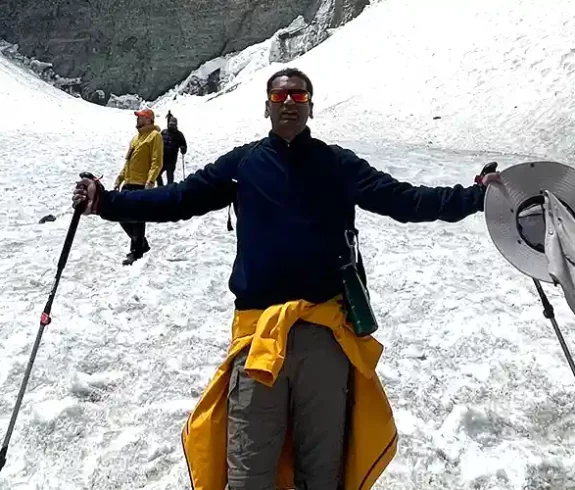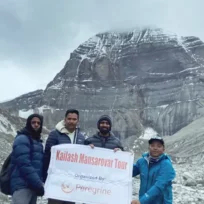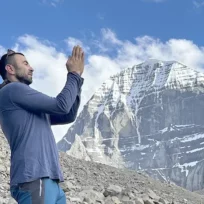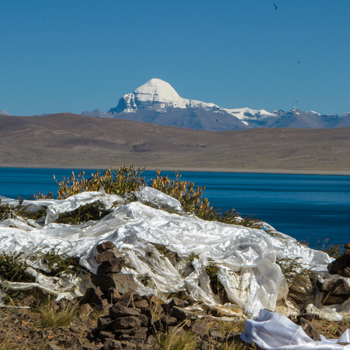The Kailash Mansarovar Yatra, a pilgrimage held sacred by Hindus, Buddhists, Jains, and Bon followers, is a transformative spiritual tour to Mount Kailash and Lake Mansarovar in the heart of Tibet. This awe-inspiring adventure through the Himalayas promises a life-changing experience for devotees and adventurers alike. But before you lace up your hiking boots, let’s unravel the mysteries of the Kailash Mansarovar Yatra Cost, a crucial step in planning your tour.
Who Will Benefit from this Guide?
- Spiritual Seekers: If you yearn for a deep connection with your faith, we’ll help you navigate the financial aspects of this sacred pilgrimage.
- Adventure Awaits: For those who crave spiritual enlightenment and thrilling experiences, we’ll shed light on the costs of this unique adventure.
- The Curious Traveler: Even if you’re just captivated by the allure of Mount Kailash and Lake Mansarovar, we’ll break down the expenses of exploring this remote and breathtaking region.
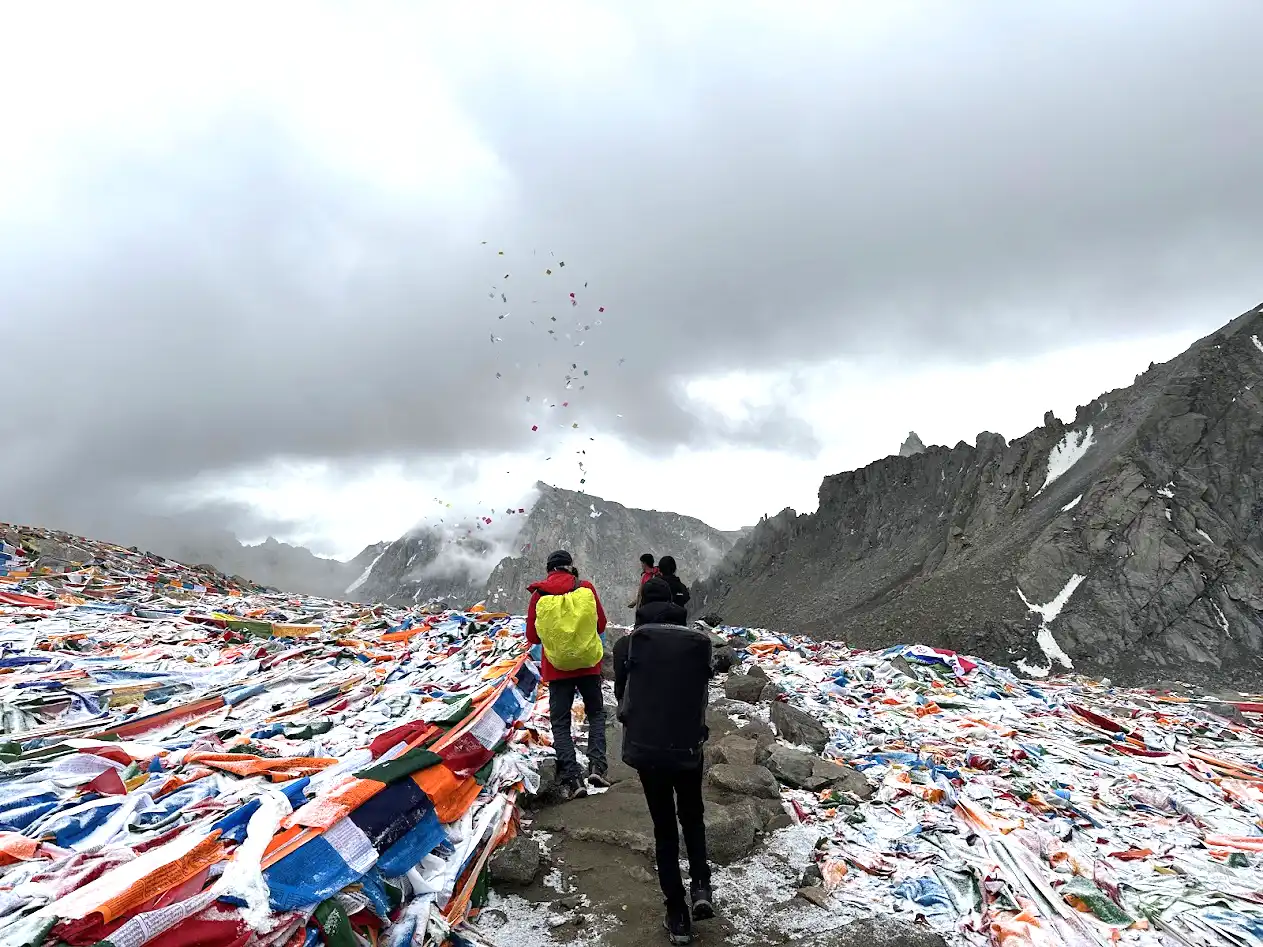
What Usually Covers
- The Nitty-Gritty of Costs: We’ll dissect every expense, from transportation and accommodation to permits and everything in between.
- Your Budget, Your Way: Discover how different routes, tour operators, and optional extras can impact your spending.
- Smart Budgeting Tips: Learn how to plan your finances wisely and make this spiritual adventure accessible.
- Reliable Resources: We’ll direct you to official websites and trustworthy sources for more information on the Kailash Mansarovar Yatra.
Factors Influencing the Kailash Mansarovar Yatra Cost
The cost of your pilgrimage to Mount Kailash and Lake Mansarovar does not have a fixed price. Several key factors come into play, and understanding these can help you tailor a budget that suits your needs.
Travel Routes and Their Impact on Cost
Your chosen route significantly affects your Kailash Mansarovar Yatra Cost. Here’s a breakdown of the primary options and how they impact your wallet:
- Overland Routes via Kathmandu: These routes typically start in Kathmandu, Nepal, and involve road travel and trekking. They are generally more budget-friendly compared to helicopter options.
- Overland Routes through India: Some itineraries begin in Indian cities like Delhi or Lucknow and cross into Tibet via different border points. The overall Kailash Mansarovar Yatra Cost can fluctuate based on your chosen itinerary and mode of travel. Nowadays, this route is closed.
- Helicopter Routes: Helicopter tours are available for those seeking a quicker and more comfortable tour. However, they come with a premium price tag, often significantly higher than overland options. You can take a helicopter from Kathmandu to Syabrubeshi and back to Kathmandu.
Choosing the Right Route for Your Budget
- Budget-conscious pilgrims: If you’re looking for an affordable option, overland routes via Kathmandu are the best. It allows you to experience the landscape more slowly and interact with local communities.
- Time-constrained travelers: Helicopter tours are ideal for those with limited time, as they slightly reduce travel time. However, be prepared for a higher cost.
- Comfort seekers: A helicopter tour might be worth the extra expense if you prefer a more comfortable tour with less strenuous trekking.
Tip: When considering a route, research tour operators and compare their itineraries and prices. Look for options that align with your budget and preferences.
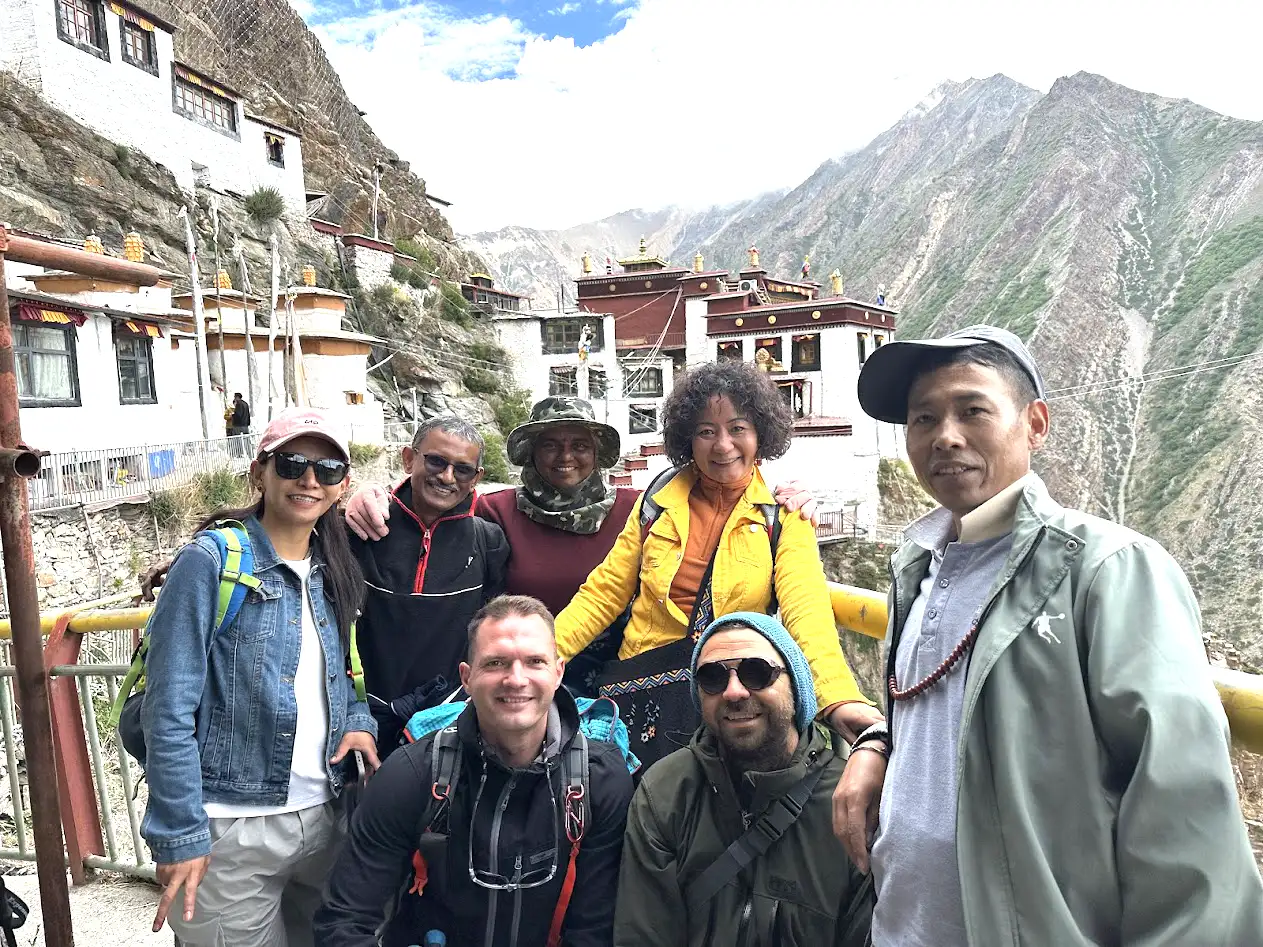
Timing is Key: Seasonal Price Swings
Your chosen travel dates can significantly sway the overall Kailash Mansarovar Yatra cost so that careful planning can make a big difference in your budget. Let’s take a closer look at the seasonal dance of prices:
- Off-Season Savings (Winter): The colder months (December through February) are considered the off-season due to the harsh weather. While a few tour operators continue to run trips during the off-season, your options might be more restricted, and prices could rise due to fewer travelers. Usually, Kailash remains closed because of the massive snow.
- Peak Season Splurge (May-September): As the weather warms up, so does the demand for the yatra. The peak season often means higher prices for everything from your cozy bed to your transportation and permits.
Weather’s Role in Your Wallet
- Sunny Skies, Higher Prices (May-September): The peak season offers the most predictable weather, but that comes at a cost. Expect clear skies, comfortable temperatures, and a higher price tag for your pilgrimage.
- The Gamble of Shoulder Seasons (April and October): The shoulder seasons might be your sweet spot for balancing budget and weather. While the weather can be unpredictable, you might snag more affordable deals.
- Winter Wonderland, Budget Beware (December-February): Winter’s heavy snow and freezing temperatures create a challenging, even risky, tour. If you’re brave enough to go, be prepared for limited choices and potentially higher costs due to the need for specialized gear and experienced guides.
Timing Your Trip, Your Way
- Budget-Minded Pilgrims: If your wallet’s tight, aim for the shoulder seasons or even the off-season for potential savings. Just be sure to do your weather homework and pack accordingly.
- Comfort-First Travelers: If a predictable and comfortable tour is your priority, the peak season is your best bet. But be prepared to pay a premium and book your trip well ahead of time.
- Adventure Enthusiasts: The off-season might be your calling for brave souls who crave a challenge and don’t mind a little weather roulette. Just remember, your choices might be limited, so preparation is vital.
Duration of the Trip: Balancing Time and Budget
The length of your Kailash Mansarovar Yatra is crucial in determining your overall cost. Let’s weigh your options:
- Standard Itineraries: Usually lasting 14 to 16 days, these trips hit the highlights – Mount Kailash, Lake Mansarovar, and the surrounding wonders. They strike a good balance between keeping costs down and giving you a fulfilling pilgrimage experience.
- Extended Itineraries: If you’re yearning for a deeper dive into Tibetan culture or want to explore beyond the main sites, consider an extended itinerary of 20 days or more. Remember, these immersive options naturally cost more due to extra nights, additional travel, and added activities.
How Trip Length Affects Your Wallet
Each extra day you add to your adventure will influence your budget:
- Accommodation: More nights mean more money spent on hotels or guesthouses.
- Meals: The longer you’re on the road, the more meals you’ll need, which adds up.
- Transportation: Extended itineraries often involve more travel within Tibet, bumping transportation costs.
- Activities: Some longer trips include visits to other unique spots, such as Lhasa, Shigatse, or even Everest Base Camp. These extras mean extra costs for entrance fees, guides, and transportation.
Choosing Your Ideal Trip Length
- Short on Time: A standard itinerary might be the most practical choice if your calendar is tight.
- Watching Your Wallet: Standard itineraries typically offer a more budget-friendly option.
- Cultural Deep Dive: For those craving a truly immersive experience and a deeper understanding of the region, an extended itinerary is the way to go, even if it means spending more.
Pro Tip: When you compare itineraries, examine what each includes closely. Some offer more meals, activities, or extra destinations, adding value to the overall package.
Breaking Down the Kailash Mansarovar Yatra Cost: Your Financial Roadmap
Now that you have a better grasp of the factors that influence the overall cost of your pilgrimage, let’s dive into the nitty-gritty of the expenses themselves. Understanding each component will help you create a realistic budget and avoid financial surprises.
Travel Expenses: Getting You There and Around
The travel portion of your Kailash Mansarovar Yatra cost depends on your starting point and chosen mode of transportation. Here’s what to expect:
Airfare to Your Starting Point
- India: If you’re starting your yatra from India (e.g., Delhi or Lucknow), factor in the cost of round-trip flights from your home city to your departure point. Airfare can vary depending on your origin, booking time, and airline choice.
- Nepal (Kathmandu): Many pilgrims begin in Kathmandu, Nepal. In this case, you must budget flights to Kathmandu from your home country.
- China (Lhasa): While less common, some itineraries start in Lhasa, Tibet. Due to its remote location, this option typically involves higher airfare costs.
Local Transportation
Once you’ve reached your starting point, local transportation costs come into play:
- Buses: These are a standard and budget-friendly option for overland routes. Expect to use buses for longer distances between cities and towns.
- Jeeps: Jeeps are often used for off-road sections and in mountainous terrain where buses might not be suitable. They can be more expensive than buses.
- Private Cars: Some tour operators offer private car options for added comfort and flexibility. However, this is usually the most expensive mode of local transportation.
Remember
- Group vs. Solo Travel: Joining a group tour can often save transportation costs, as participants share expenses.
- Negotiation: If you’re traveling independently, feel free to negotiate fares for local transportation, especially for jeeps and private cars.
- Research: Before you go, research the typical transportation costs in the region and factor those into your Kailash Mansarovar Yatra Cost.
Accommodation Costs: Where You’ll Rest Your Head
Your accommodation choices throughout the Kailash Mansarovar Yatra can significantly influence your overall cost, so choose wisely! Let’s take a closer look at the options:
- Guesthouses are the most common accommodation along the pilgrimage route, particularly in smaller towns and villages. Guesthouses offer basic amenities like a bed, blankets, and sometimes a shared bathroom. While they may not be luxurious, they are budget-friendly and provide a glimpse into local life.
- Lodges: In larger towns like Darchen (the base camp for Mount Kailash), you may find lodges that offer slightly more comfortable amenities, including private bathrooms, hot water, and occasionally Wi-Fi. Lodges typically cost more than guesthouses.
- Camping: Some itineraries include camping, especially during the parikrama (circumambulation) of Mount Kailash. Camping is a more adventurous option, often favored by those seeking a closer connection to nature. Your tour package may include the cost of camping gear and supplies.
Cost Differences Along the Route
Accommodation prices can vary depending on your location along the pilgrimage route:
- Kathmandu/Lhasa: These significant cities provide various accommodation choices, ranging from budget guesthouses to luxury hotels, with varying prices.
- Darchen: As the base camp for Mount Kailash, Darchen offers a variety of guesthouses and hotels. Given its role as the gateway to Mount Kailash, Darchen sees higher accommodation prices due to the influx of pilgrims.
- Remote Areas: In more remote locations like Mansarovar, Dirapuk, and Zutul Puk, accommodation options may be limited to basic guesthouses. Prices can be more affordable, but expect fewer amenities.
Tip: When choosing your accommodation, consider your comfort level and budget. If you’re on a tight budget, guesthouses offer the most affordable option. If you prefer more comfort, consider lodges or hotels in larger towns.
Permit and Visa Fees: Navigating the Bureaucracy
Beyond travel and accommodation, permits and visas are essential expenses for your Kailash Mansarovar Yatra. They grant you legal access to Tibet and specific areas within the region.
- Tibet Travel Permit: The Tibet Travel Permit is mandatory for all foreign travelers entering Tibet, including those undertaking the Kailash Mansarovar Yatra. It plays a role in determining your overall Kailash Mansarovar Yatra cost, as the price varies depending on your nationality and the tour you choose.
- Chinese Visa: Most nationalities require a Chinese visa to enter Tibet. The cost varies based on your nationality and the type of visa you need.
- Additional Permits (If Applicable): Certain areas along the Yatra route may require additional permits. For example, you’ll need a separate license if your itinerary includes visiting the Everest Base Camp, Mount Kailash, or different monasteries.
Securing Your Permits and Visas
- Through a Tour Operator: Most tour operators will handle the permit and visa application process on your behalf, including the associated costs. It can be a convenient choice, particularly if you need to familiarize yourself with the process.
- Independent Application: If you prefer to apply for permits and visas independently, research the requirements thoroughly. Be sure to factor in the application fees and processing times.
Tip: Start the permit and visa application process before your trip. Processing times can differ, so ensuring smooth pilgrimage plans is essential.
Food and Drink: Nourishing Your Body and Soul
Understanding the unique culinary landscape of the Kailash Mansarovar Yatra and budgeting accordingly is critical to maintaining your energy levels without depleting your Kailash Mansarovar Yatra Cost.
Average Costs for Meals and Beverages
The price you pay for food and drinks will depend on your taste and the choices available at each stop on your pilgrimage. Here’s a general idea of what to expect:
- Basic Meals (Guesthouses and Local Eateries): Simple, local fare like dal bhat (lentil soup and rice), noodles, or momos (dumplings) is often the most affordable option, ranging from $15 to $20 per meal.
- Restaurant Meals (In Larger Towns): In places like Darchen or Lhasa, you’ll find restaurants offering a wider variety of cuisines, including Chinese, Tibetan, and even some Western options. Prices can be higher, averaging $20 to $25 per meal.
- Snacks and Beverages: Small shops sell packaged snacks, bottled water, and other beverages—budget around $5 to $10 per day for these essentials.
Availability of Food Supplies and Meal Options
- Limited Options in Remote Areas: As you venture into more remote areas, the availability of food options may decrease. Stick to simple, readily available dishes and pack snacks to supplement your meals.
- Vegetarian and Dietary Restrictions: While vegetarian food is widely available, those with specific dietary restrictions may need help finding suitable options. Discuss your needs with your tour operator and consider bringing snacks or supplements to meet your requirements.
- Organized Tours: Most organized tours include meals in their packages, simplifying your food budget. Be sure to inquire about the types of meals provided and any additional costs for special requests.
Tips for Eating Well on the Kailash Mansarovar Yatra:
- Embrace the Local Cuisine: Trying the local Tibetan and Nepali dishes is part of the cultural experience.
- Carry Snacks: Pack high-energy snacks like nuts, dried fruits, and protein bars to fuel you during long treks.
- Hydrate: Staying hydrated is critical at high altitudes, so pack a reusable water bottle and top it up regularly.
- Consider Altitude: Your appetite and digestion may be affected by altitude. Opt for light, easily digestible meals, especially during the initial days of your pilgrimage.
Navigating the Kailash Mansarovar Yatra Cost: Package Tours vs. Independent Travel
How you organize your Kailash Mansarovar Yatra, whether you opt for the convenience of a package tour or the independence of solo travel, will significantly impact your overall cost and the nature of your experience. Let’s weigh the pros and cons of each approach to help you choose the path that’s right for you.
Package Tours: All-Inclusive Convenience
Typical Inclusions
Package tours offer a comprehensive solution, covering most, if not all, of the essential elements of the Yatra, including:
- Transportation: All flights, ground transportation, and transfers within Tibet. The cost depends on the number of passengers, travel time, and the vehicle used. If you use a luxury Toyota Land Cruiser, the cost will be high.
- Accommodation: Package tours typically include pre-booked accommodations, whether hotels, guesthouses, or even camping sites.
- Meals: The package often includes breakfast. If you are in a big group, it’s better to hire food and cook from Nepal. If not, it is better to take a breakfast option and pay for the lunch and dinner separately.
- Permits: Your tour operator will handle the necessary permits and visa applications. Individuals are not allowed to take permits.
- Guides: Experienced guides familiar with the region and its cultural significance will accompany you throughout the tour.
Pros of Package Tours
- Convenience: They pre-arrange everything, saving you time and effort in planning.
- Safety: You’ll have the support and expertise of guides throughout your trip.
- Logistics: The tour operator handles all transportation and accommodation details.
- Group Camaraderie: You’ll have the opportunity to connect with fellow pilgrims and share the experience.
Cons of Package Tours
- Cost: Package tours can be more expensive than independent travel.
- Flexibility: You’re bound to the tour itinerary, with less room for spontaneity.
- Personalization: Itineraries may not cater to your specific interests or preferences.
Planning Independently: Freedom and Challenges
Challenges and Potential Cost Savings
Going it alone offers greater flexibility and the potential for cost savings, but it also comes with challenges:
- Planning and Research: You’ll need to research and organize every aspect of your trip, including transportation, accommodation, permits, and visas.
- Language Barrier: Communicating in Tibet can be difficult if you don’t speak Chinese or Tibetan.
- Logistics: Arranging transportation and accommodation can be time-consuming and complex.
- Safety: You must be more self-reliant and aware of potential risks.
Potential Cost Savings
While independent travel requires more effort, it can be more budget-friendly. You have control over your spending on:
- Accommodation: You can choose budget-friendly guesthouses or camps to save on costs.
- Transportation: You can opt for public buses or shared taxis instead of private vehicles.
- Food: You can eat at local eateries and markets, often cheaper than restaurants.
Note: Nowadays, individuals are not allowed to travel to Kailash.
Necessary Preparations for Independent Travelers
If you’re considering independent travel, be sure to:
- Research Thoroughly: Learn about the route, permits, visas, and cultural norms.
- Learn Basic Phrases: A few key phrases in Chinese or Tibetan can be helpful.
- Secure Permits in Advance: Don’t leave this to the last minute.
- Pack Wisely: Bring everything you need, as supplies can be limited in remote areas.
- Stay Informed: Check for travel advisories and updates before you go.
Budgeting for the Unexpected: Additional Kailash Mansarovar Yatra Costs
While we’ve covered the significant expenses, budgeting for unexpected costs is crucial. A little foresight can save you from financial stress during your pilgrimage.
Travel Insurance: Your Safety Net
Make sure to leave home with comprehensive travel insurance. The Kailash Mansarovar Yatra’s high altitudes and challenging terrain demand robust coverage.
Importance of Comprehensive Travel Insurance:
- Medical Emergencies: High-altitude sickness can be a serious concern. Ensure your insurance covers evacuation and medical treatment in remote areas.
- Trip Cancellation/Interruption: Protect your investment if unforeseen circumstances require you to cancel or shorten your trip.
- Lost Luggage: If your luggage goes astray, insurance can help you replace essential items.
- Emergency Evacuation: If you need emergency medical service and need to evacuate to a low altitude, you must pay USD 500 from Darchen to Saga and USD 1000 from Darchen to Kiyrung.
- Porter and Extra Transportation: If you need a porter for Kora, the porter’s cost is USD 60 per day, and if you want to skip some parts after Dolma La Pass, you have to pay approximately USD 60 to come to Darchen.
Rough Cost Estimates and Recommended Coverage
Travel insurance prices depend on several factors, such as your age, the length of your trip, and the extent of coverage you select. Generally, a comprehensive policy tailored for the Kailash Mansarovar Yatra can range from $50 to $200.
Tip: When selecting a policy, ensure it explicitly covers high-altitude trekking and activities in Tibet.
Gear and Equipment: Gearing Up for the Journey
Packing the right gear is essential for a safe and comfortable Kailash Mansarovar Yatra. Here’s a list of essentials and considerations for buying vs. renting:
Necessary Gear
- Warm Clothing: Layers of thermal wear, fleece jackets, down jackets, waterproof outer layers.
- Hiking Boots: Sturdy, broken-in boots are crucial for the trek around Mount Kailash.
- Sleeping Bag: If camping is on your agenda, a warm bag is essential for staying cozy during chilly nights.
- Daypack: For carrying essentials during daily hikes.
- First-Aid Kit: Include altitude sickness medication, painkillers, and basic supplies.
Buying vs. Renting
- Buying: If you plan to do more high-altitude trekking in the future, it’s a good idea to invest in quality gear.
- Renting: If this is a one-time trip, renting gear in Kathmandu or Lhasa can be a more budget-friendly option.
Unexpected Expenses: The Emergency Fund
Setting aside an emergency fund is an intelligent way to buffer your Kailash Mansarovar Yatra Cost against unexpected situations that may arise during this remote and unpredictable pilgrimage.
- Medical Issues: Altitude sickness or other health issues may require unexpected medical attention.
- Delays and Cancellations: If your flights get delayed or canceled, you might shell out extra cash for unexpected hotel stays and meals.
- Lost or Damaged Gear: Replacing lost or damaged gear can be costly.
Tips and Gratuities
It’s customary to tip your guides, porters, and drivers at the end of the Yatra. The budget for this additional expense is typically a percentage of the tour cost.
Remember, a well-prepared budget ensures you can fully enjoy the spiritual significance of the Kailash Mansarovar Yatra without financial worries.
Innovative Strategies to Lower Your Kailash Mansarovar Yatra Cost: Your Budget-Friendly Guide
A spiritual adventure to Mount Kailash and Lake Mansarovar doesn’t have to drain your bank account. With savvy planning and budgeting, you can experience this sacred pilgrimage without sacrificing comfort or fulfillment.
Budgeting Smarter: Your Financial Game Plan
- Craft a Realistic Budget: Before you start packing, set a realistic budget for your Yatra. This information will help you make intelligent travel style, accommodations, and duration choices.
- Keep Tabs on Your Spending: Track every penny – from flights and visas to snacks and souvenirs. This way, you’ll stay on top of your spending and spot areas where you can save.
- Your Priorities, Your Budget: What’s most important to you? A comfortable bed is a top priority. Do you prefer to spend a significant portion of your budget on cultural experiences like visiting monasteries or attending traditional performances? Figuring this out helps you make the most of your money.
- Hunt for the Best Deals: Don’t just go with the first tour company or flight you see. Compare prices, explore different options, and snag those deals and discounts!
- Off-Season Adventures: If your schedule is flexible, consider traveling during the shoulder seasons or off-season for potential savings.
Stretching Your Rupees: Travel, Stay, and Eat on a Dime
Travel
- Hit the Road: Opting for overland routes from Kathmandu or India can be much easier on your wallet than helicopter rides.
- Join the Group: Group tours often share costs among travelers, making them a budget-friendly option compared to going solo.
Accommodation
- Simple Stays: Cozy guesthouses usually cost less than fancy hotels.
- Share the Space: If you’re traveling with a friend, sharing a room can cut your accommodation costs in half.
- Embrace Nature: If your itinerary allows you to do so and you’re up for it, camping can be a fun and frugal way to stay.
Meals
- Go Local: You’ll find delicious and budget-friendly eats at small local restaurants and tea houses.
- Snack Attack: Pack some of your favorite snacks to avoid impulse buys at pricey tourist spots.
- Eat with the Group: If your tour includes meals, take full advantage of those to save your cash for other things.
Bonus Tips
- Pack Light: Extra baggage can mean extra fees on flights and transportation.
- Learn a Little Lingo: Picking up a few essential phrases in the local language can give you an edge when haggling for better prices at markets and shops.
- Be a Currency Wiz: Research the best exchange rates and avoid those airport exchange booths, which often have less-than-stellar rates.
Kailash Mansarovar Yatra Cost: Your Journey is Worth Every Rupee
As we reach the final leg of our exploration into the Kailash Mansarovar Yatra cost, it’s clear that this sacred pilgrimage is an investment in both your spiritual growth and unforgettable memories. By understanding the intricacies of the expenses, you can confidently plan a trip that aligns with your budget and aspirations.
Key Takeaways to Remember
- The Kailash Mansarovar Yatra cost is a mosaic: It comprises many pieces, including travel, accommodation, permits, food, and more.
- Research is Your Compass: Take the time to compare options for tour operators, routes, and accommodations to find the best value.
- Budget Wisely: Set a realistic budget and track your spending to stay on track.
- Prioritize Your Experience: Decide what matters most to you – comfort, adventure, cultural immersion – and allocate your budget accordingly.
- Prepare for the Unexpected: Pack smart, get your permits early, and have a financial cushion for unforeseen events.
- Choose Your Adventure: Whether you choose the convenience of a guided group or the independence of a solo adventure, carefully consider the advantages and disadvantages to determine the best path for your unique pilgrimage.
